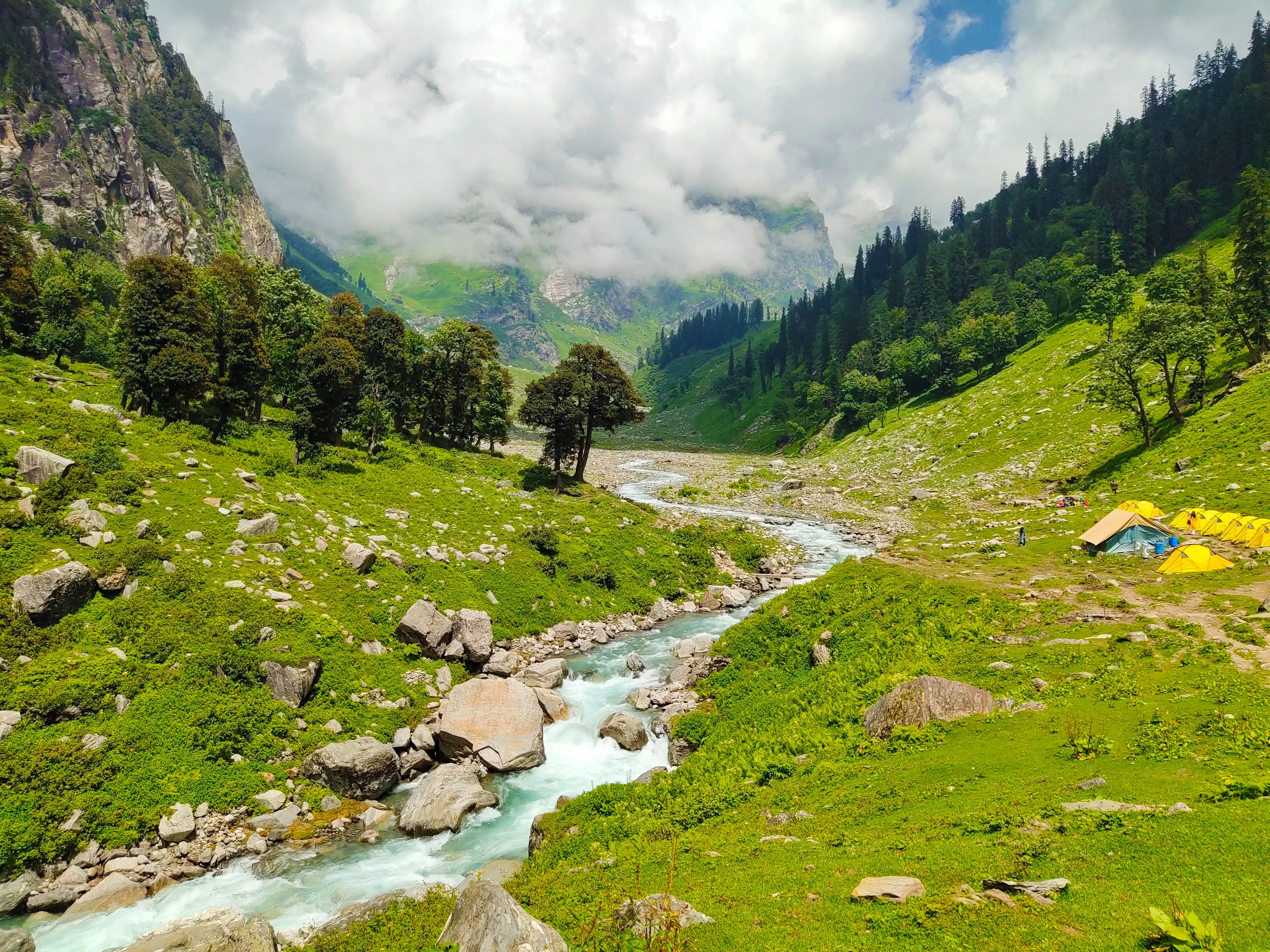7 min to read
Guru Ghasidas National Park(Sanjay National Park), Chattisgarh, Tiger reserve of India

Guru Ghasidas National Park is the 53rd Tiger Reserve of India, situated in the beautiful state of Chhattisgarh in central India, near the border with Madhya Pradesh. The park is a treasure trove of biodiversity, home to a wide range of wildlife, including majestic tigers, and is an important part of India’s conservation efforts.
Chattisgarh is often called the “wildlife hub of India” because of its rich natural heritage. The state boasts 2 National Parks, 3 Tiger Reserves, 8 Wildlife Sanctuaries, and 1 Biosphere Reserve, making it a dream destination for wildlife enthusiasts. With its lush forests, diverse wildlife, and well-preserved habitats, Guru Ghasidas National Park and the surrounding region are must-visit spots for anyone who loves nature and wants to experience the wonders of India’s wildlife up close.
The park is located in the Koriya district of Chhattisgarh. The park is spread over an area of 466 sq km. The park is named after the Guru Ghasidas, the founder of the Satnami movement in the 18th century.
 Table of Contents
Table of Contents
- Table of Contents
- Introduction
- History of Guru Ghasidas National Park
- Satnami Movement: A Brief Overview
- Park Bio-Diversity
- Entry Gates
- How to Reach
- Best Time to Visit
- cuurent situation | 2024 update
- Conclusion
 Introduction
Introduction
The park was declared a tiger reserve by the National Tiger Conservation Authority (NTCA) on 5th October 2021, making it the 53rd tiger reserve in India and the fourth one in Chhattisgarh, after Achanakmar and Udanti-Sitanadi.
The decision was taken after a detailed assessment of the park’s potential for tiger conservation, based on factors such as habitat quality, prey density, connectivity, and management effectiveness.
It’s also a part of the tiger corridor between Jharkhand and Madhya Pradesh and connects the tiger reserves of Bandhavgarh (Madhya Pradesh) and Palamu Tiger Reserve (Jharkhand) and is expected to help in the dispersal of tigers in the region.
It’s also home to a significant population of tigers, leopards, jackals, wild dogs boar, hyenas, and other wildlife species.
 History of Guru Ghasidas National Park
History of Guru Ghasidas National Park
Guru Ghasidas National Park, also known as Sanjay National Park, was originally established in 1983 as part of the Sanjay-Dubri Tiger Reserve. Its primary goal was to promote tiger conservation and protect their natural habitat. However, in 2011, the park was renamed to honor the legacy of Guru Ghasidas, a revered social reformer and the founder of the Satnami sect.
Guru Ghasidas, born in the 18th century in this region, dedicated his life to challenging social inequalities and spreading the message of equality and compassion. The renaming of the park reflects the deep cultural and historical significance of his contributions, tying the region’s natural beauty to its rich heritage. Today, the park stands as a symbol of both environmental and cultural preservation, offering a sanctuary for wildlife and a tribute to one of the region’s most influential figures.
 Satnami Movement: A Brief Overview
Satnami Movement: A Brief Overview
The Satnami Movement was started in the 18th century by Guru Ghasidas in Chhattisgarh to fight against caste discrimination and unfair treatment in society. Guru Ghasidas was born into a poor and marginalized community and believed in equality for everyone. He taught people to follow Satnam, meaning “True Name,” and worship one formless God instead of idols.
The movement encouraged people to reject superstitions and rituals and live a life based on truth, kindness, and simple living. It gave hope and strength to the oppressed and brought them together to stand against injustice.
The Satnami community grew as people found pride and dignity in its teachings. Even today, the movement reminds us of the importance of equality, humility, and standing up for what is right. It remains an important part of India’s history of social and religious change.
 Park Bio-Diversity
Park Bio-Diversity
The park is divided into two parts by the Rend River, which flows through it. The northern part is known as Sanjay Dubri National Park, while the southern part is known as Virangna Van Vihar National Park.
The park boasts a diverse landscape, ranging from sal forests, bamboo thickets, grasslands, hills, and valleys.
The park is also rich in water resources, with several perennial streams, rivers, and waterfalls. The park is a part of the Central Indian Landscape, which is one of the most important tiger habitats in the world.
The park also hosts a variety of herbivores such as chital, sambar, nilgai, barking deer, four-horned antelope, gaur, and wild boar.
The park is also a haven for birdwatchers, with over 300 species of birds recorded here, including some rare and endangered ones like the lesser adjutant stork, white-rumped vulture, red-headed vulture, and white-backed vulture.
The park offers various opportunities for visitors to explore its natural beauty and wildlife. There are several watchtowers and machans (platforms) inside the park that provide a panoramic view of the surroundings and a chance to spot animals.
There are also nature trails and guided safaris that take visitors through different zones of the park.

 Entry Gates
Entry Gates
The park has two entry gates. The main gate is located at the northern end of the park, near the village of Sanjay. The other gate is located at the southern end of the park, near the village of Virangna.
- Koriya district gate
- Sidhi district gate
 How to Reach
How to Reach
 By AIR
By AIR
The nearest airport is Swami Vivekananda Airport in Raipur, Chhattisgarh, located around 330 km from the park. From the airport, you can hire a taxi or take a bus to reach the park.
Alternatively, Jabalpur Airport in Madhya Pradesh, about 300 km away, can also be an option for travelers coming from central or northern India.
 By Train
By Train
The nearest railway station is Baikunthpur Road Railway Station, which is around 45 km from the park. It is well-connected to major cities in Chhattisgarh and neighboring states. From the station, you can hire a taxi or use local transport to reach the park.
 By Road
By Road
Guru Ghasidas National Park is accessible via road:
From Raipur: Approximately 330 km (7-8 hours) via NH130. From Bilaspur: Around 200 km (5-6 hours). From Jabalpur: Approximately 300 km (7-8 hours).
Buses and private vehicles can be used to reach nearby towns like Baikunthpur or Manendragarh, from where local transport or taxis can take you to the park.
 Best Time to Visit
Best Time to Visit
The best time to visit Guru Ghasidas National Park is from October to March when the weather is pleasant and the park is teeming with wildlife. During this time, the park is lush and green, making it an ideal time for wildlife sightings and photography.
 cuurent situation | 2024 update
cuurent situation | 2024 update
Currently, the second tiger death has been reported in two year is matter of concern for the forest department and make them to take necessary steps to prevent such incidents in future. Times of India - news source
 Conclusion
Conclusion
Guru Ghasidas National Park stands as a remarkable testament to the success of dedicated conservation efforts in safeguarding wildlife and their habitats. It highlights the tireless commitment of the forest department and the unwavering support of local communities. For UPSC aspirants, understanding the park’s significance is crucial—not just as a hub for tiger conservation but as a living example of India’s biodiversity preservation efforts. Beyond its ecological value, the park is a symbol of pride for Chhattisgarh and a vital pillar in India’s ongoing mission to protect and nurture its rich natural heritage.




Comments